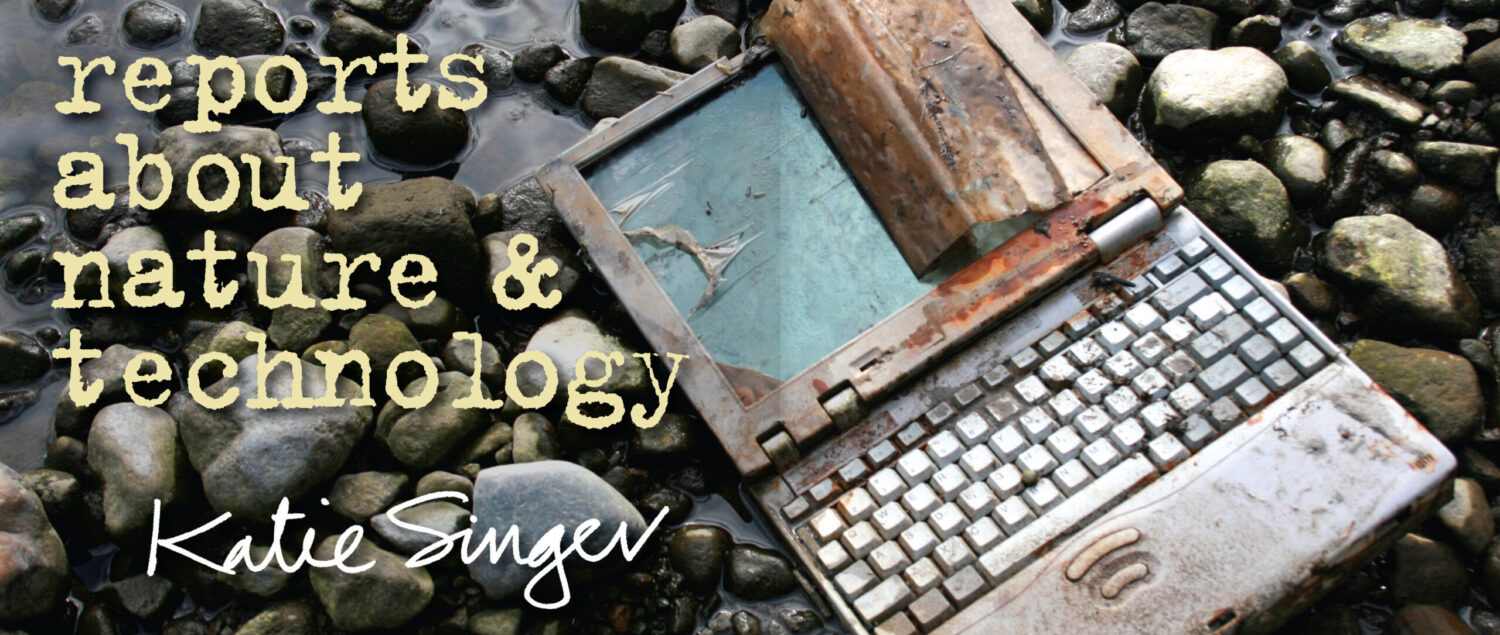Questioning Our Digital Footprint
Nearly every day, I hear about “zero-emitting,” “carbon-neutral” solar PV arrays, industrial wind facilities, battery storage, Internet access, electric vehicles (EVs) and “grid modernization.” Yesterday I learned that my state’s legislators are considering a bill that would require all new construction to be “solar and e-vehicle-ready.”
We’re building out lots of new tech based on marketing terms—without due-diligent investigations certifying that a technology’s cradle-to-grave impacts have been evaluated and all hazards have been mitigated.
In response to industry’s claims that digital is “green,” Miguel Coma and I have co-authored, “Questioning Our Digital Footprint.” Meer.com published this piece February 25th. https://www.meer.com/en/72316-questioning-our-digital-footprint It’s also available on my website at www.ourweb.tech/letter-48.
More questions
Would other countries adopt the new decree passed in France? It prohibits corporations from calling their products “carbon neutral” without proof—without an annual assessment of the product’s cradle-to-grave greenhouse gas emissions.
How would tech development change if we recognized that all electrical equipment—including smart meters, cell phones, tablets, cellular antennas, solar PVs, electric vehicles and battery electric storage systems—pose fire hazards? (A Norwegian shipping company will not transport e-vehicles because ships cannot fight lithium-ion battery fires.)
How/would our technology landscape change if we insisted on documentation from a professional engineer (PE) that all hazards have been mitigated…before the equipment goes live? To regulators and legislators, could we repeatedly insist: “Please provide a copy of the professional engineer’s report certifying that the equipment’s hazards have all been mitigated.”
Imagine if manufacturers, regulators and users recognized the cancer-causing effects of exposure to radio-frequency radiation from mobile devices and infrastructure?
How would our technosphere change if we recognized the engineering principle that no technology is safe (including from fires and explosions) until it is proven safe by a state-credentialed subject-matter expert (a PE) who carries liability for his or her reports?
What if those who aim for respectful relationship with the Earth recognized that manufacturing anything—including tablets, smartphones, solar panels, industrial wind turbines, battery storage systems, electric vehicles, cellular access networks—involves fossil fuels, extracting ores, extraordinary water use, chemical manufacturing and toxic waste? Indeed, manufacturing “efficient” devices and appliances leads to more energy use, more extractions, more water use, chemicals and toxic waste. It also increases tech use. This is the Jevons Paradox, the rebound effect. For example, corporations now manufacture new devices and build new generations of access networks to make streaming video more efficient. In turn, people buy new manufactured goods and access more and more videos. This increases energy use, extractions, toxic waste, etcetera. “Manifesto for an Ecosocial Energy Transition from the Peoples of the South,” warns of “new forms of energy colonialism, now in the name of a Green transition.”
Instead of producing and consuming more new stuff, could we redesign our communities and our lives for walkability and bike-ability, decrease individually-owned cars, increase public transportation?
Could we create healthier relationships with technology, like teens in the Log Off Movement have initiated? www.logoffmovement.org; https://www.c-span.org/video/?c5058357/emma-lembke-logoff-movement-founder
Resources
For more info about
- cell tower fires and collapses: www.ourweb.tech/fires-and-collapses
- hazards of solar PVs: www.ourweb.tech/letter-43
- protective conditions for solar PVs: www.ourweb.tech/letter-45
- electric vehicle hazards and fires: www.ourweb.tech/letter-27 and www.ourweb.tech/letter-33
- the UN’s conflicting ideas about sustainability: www.ourweb.tech/letter-31
Can you help?
I really am nearly finished with my next book, Mapping Our Technosphere. It’s packed with photos that show children mining for cobalt and coltan, energy-intensive smelters that produce silicon for transistors and solar panel wafers, international cargo shipping and more. Twenty-five of these images require copyright permits. A permit to use one image in the book and in PowerPoint presentations costs as much as $175. Access to all of these hard-hitting photos will cost $4500. Would you sponsor a permit to use one image? Would you sponsor two permits? Every contribution matters!
If you’d like to contribute through a 501c3, please write to Katie Singer directly by replying to this email.
